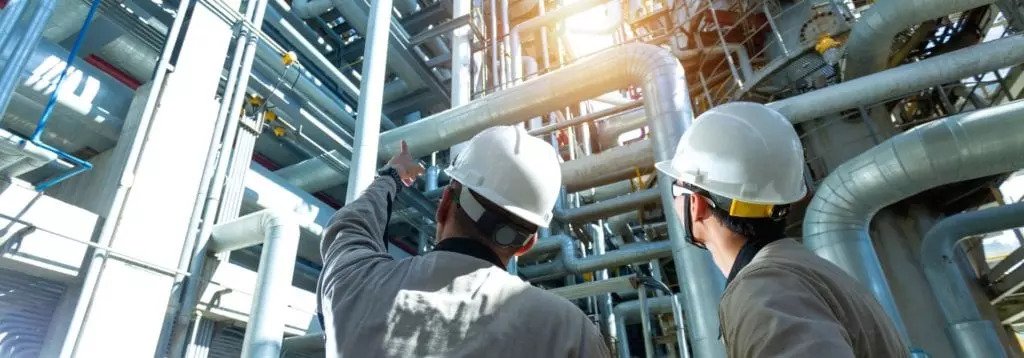Cleaner
Environmental Progress
No nation is doing more to protect and improve the environment than the United States – with the oil and natural gas industry leading the way through investment in innovation.

Cleaner Energy = Cleaner Air
Unmatched investments by this industry have positioned the United States as the global leader in energy and environmental progress. The United States continues to lead the world in reducing carbon dioxide emissions – thanks to expanded use of natural gas in power generation.

Cleaner Energy = Cleaner Air
According to numbers released the Railroad Commission of Texas, the percentage of natural gas flared compared to the natural gas produced from oil and gas wells in Texas dropped from a high of 2.29% in June 2019 to 0.65% in May 2021. During the same period, the volume of gas flared decreased by approximately 73%.

Flaring is Decreasing
Texas has one of the lowest flaring rates of large oil and gas producing states in the country. According to the Railroad Commission, the statewide flaring rate in Texas fell to a record low- level of 0.2% in October. The industry has a stated goal of eliminating routine flaring by 2030, with some operators having achieved that goal already.

Natural gas flared
The average percentage of natural gas flared has remained below 2% statewide since October 2019, making Texas one of the lowest in flaring rates among all large producing states in the nation.

xx
Methane emissions are down dramatically, even as oil and natural gas production increases. Methane emissions intensity in the Permian Basin has declined almost 70% since 2011, as oil and gas production rose over 320%.

Methane emissions rates
Methane emissions rates were down nearly 70 percent in five of the nation’s largest oil and natural gas producing regions between 2011 and 2019, according to data from EPA and EIA.
ICYMI: RRC Data Shows Dramatic Decline in Flaring in Texas - TXOGA
RRC Data Shows Continued Decline in Flaring in Texas

Recent innovation
Recent innovation, investments and commitments (up/mid/downstream)
In 2020, Texas school districts received more than $2 billion in property taxes from mineral properties producing oil and natural gas.

The oil and natural gas industry is the nation’s leading investor in pioneering emission-reducing technologies and, as a result, Americans are breathing the cleanest air in decades and the U.S. leads the world in reducing energy-related carbon dioxide emissions

Texas Methane and Flaring Coalition Announces Goal of Ending Routine Flaring by 2030
Stronger.
As our nation continues its rebound from the lingering impact of the pandemic, data confirms that reliable, affordable energy, fuels and products made by the oil and natural gas industry, and the massive economic benefits industry provides, are central to Texas’ continues success.

Jobs (direct/indirect)
Texas’s oil and natural gas industry directly and indirectly supported over 2.5 million total jobs across the state’s economy in 2019. Texas ranked as the state with the highest share of total economic contributions by the oil and natural gas industry, generating $411.6 billion toward the state’s gross domestic product – including $251.2 billion added to total labor income.





“Texans understand the essential nature of oil and natural gas and this analysis confirms the indispensable role the industry plays in providing jobs and investment that benefits every community and all Texans,” said TXOGA President Todd Staples. “As the leaders in domestic energy production, our member companies’ efforts ensure reliable products are available to power modern America and serve as the underlying foundation of Texas public school, university and public infrastructure funding.”
Texans understand the essential nature of oil and natural gas and this analysis confirms the indispensable role the industry plays in providing jobs and investment that benefits every community and all Texans. As the leaders in domestic energy production, our member companies’ efforts ensure reliable products are available to power modern America and serve as the underlying foundation of Texas public school, university and public infrastructure funding.
Todd Staples
President
The oil and natural gas industry—in Texas in particular—is critical to economic revitalization and opportunities for job creation. According to the findings, in 2019, the industry directly and indirectly.
The Texas oil and natural gas industry is driving economic and environmental progress in the United States and beyond. The industry pays billions of dollars in state and local taxes and state royalties that directly fund our schools, roads, first responders and essential services.

Video
1000+ Texans, 50 Partner Organizations Convene Virtually for Texas Energy Day @ the Capitol
Economic Benefits (revenue/% of state economy)



State’s growing dependence on industry’s natural gas production/Infrastructure
ESSENTIAL ENERGY INFRASTRUCTURE

Increased Production and Infrastructure Creates Jobs and Security
The increase in production of oil and natural gas has allowed the U.S. to expand and improve infrastructure across the nation. Building this network has brought jobs, security, and innovations in technology to the U.S. for the economy’s benefit.

Energy Infrastructure is Reliable
Expanding energy infrastructure, including pipelines, tanks and terminals, is the best way to increase energy reliability and security and to protect our fuel supply in the event of a natural disaster.

Pipelines Are Safe, Reduce Pollution, Create Jobs
Pipelines are the main method of transportation for natural gas and fuel in Texas. They are also the safest method of transportation, delivering product without incident over 99.99% of the time. Pipelines help provide affordable and reliable energy to millions of families across the state and the nation, and pipeline maintenance, repair, and buildout supports hundreds of thousands of jobs in Texas and millions across the U.S. Pipelines also work to protect our environment and health by reducing pollution associated with other methods of fuel transportation.

U.S. Energy Leadership
Improving our energy infrastructure is essential to delivering the economic, security, and environmental benefits of U.S. energy leadership to communities across the country and around the world.

“Pipelines are the safest and most environmentally-friendly mode of energy transportation. Expanded pipeline infrastructure will reduce flaring, improve road safety and strengthen the Texas economy by providing hundreds of thousands of good jobs and billions of dollars in state and local tax revenues. Demand for Texas’ abundant and affordable supply of clean natural gas necessitates modernized infrastructure regulations so that Texas can continue to provide domestic energy security and global stability and make the air cleaner at home and around the world.
Todd Staples
President

ENERGY SECURITY
Today, thanks to the ingenuity, innovation and perseverance of the industry, the United States is less dependent on unstable foreign sources of the energy needed to power modern life. The Texas oil and natural gas industry is at the epicenter of the American energy resurgence that has made this possible.
The best way to ensure Americans and our trade partners have access to clean, affordable and reliable energy is to encourage homegrown, domestic energy that supports jobs and economic growth, while continuing our commitment to environmental progress.
Access to reliable, affordable power and fuel makes us safer and healthier. Emerging countries – whose residents may have burned wood or dung for heating and cooking – see major quality of life and public health improvements when clean-burning, reliable power becomes available.



Better.
Texas oil and natural gas fuels modern life as we know it. Beyond the hundreds of thousands of jobs it creates and billions in taxes it pays, oil and natural gas improves the economic and social progress of communities here and around the world. There is no substitute for oil and natural gas for the products, fuels, and electricity that power modern life.
Oil and natural gas tax and royalty revenue is used to support education, transportation, healthcare and infrastructure through the Economic Stabilization Fund (commonly known as the Rainy Day Fund), the Permanent School Fund (PSF) and the Permanent University Fund (PUF) – all of which are funded almost exclusively with taxes and state royalties paid by the oil and natural gas industry.




Education
Education
Since 2009, Texas oil and natural gas producers have paid, in addition to their production taxes, $19.8 billion to the State of Texas in royalties, about 98% of which go to the Permanent University Fund and Permanent School Fund. The value of these two behemoth funds now stand at $39.6 billion (PUF) and $55.6 billion (PSF) at the end of 2021. The Texas Permanent School Fund is the largest educational endowment in the nation.
Everyday Essentials
Oil Prices Plummeted
While oil prices plummeted in the wake of the pandemic, the need for products made from oil and natural gas skyrocketed. Nearly every in-demand product we need to be safe, to save lives and to power our economy – from face shields and hand sanitizers to high-speed internet connections and computers – is made possible by oil and natural gas.
Oil Prices Plummeted
Nearly every in-demand product we need to be safe, to save lives and to power our economy – from face shields and hand sanitizers to high-speed internet connections and computers – is made possible by oil and natural gas.
Before the Pandemic
Even before the pandemic, 96 percent of products we use every day like pharmaceuticals, electronics, cosmetics and clothing are made from oil and natural gas. There is no substitute for oil and natural gas in our lives or for our economy.






